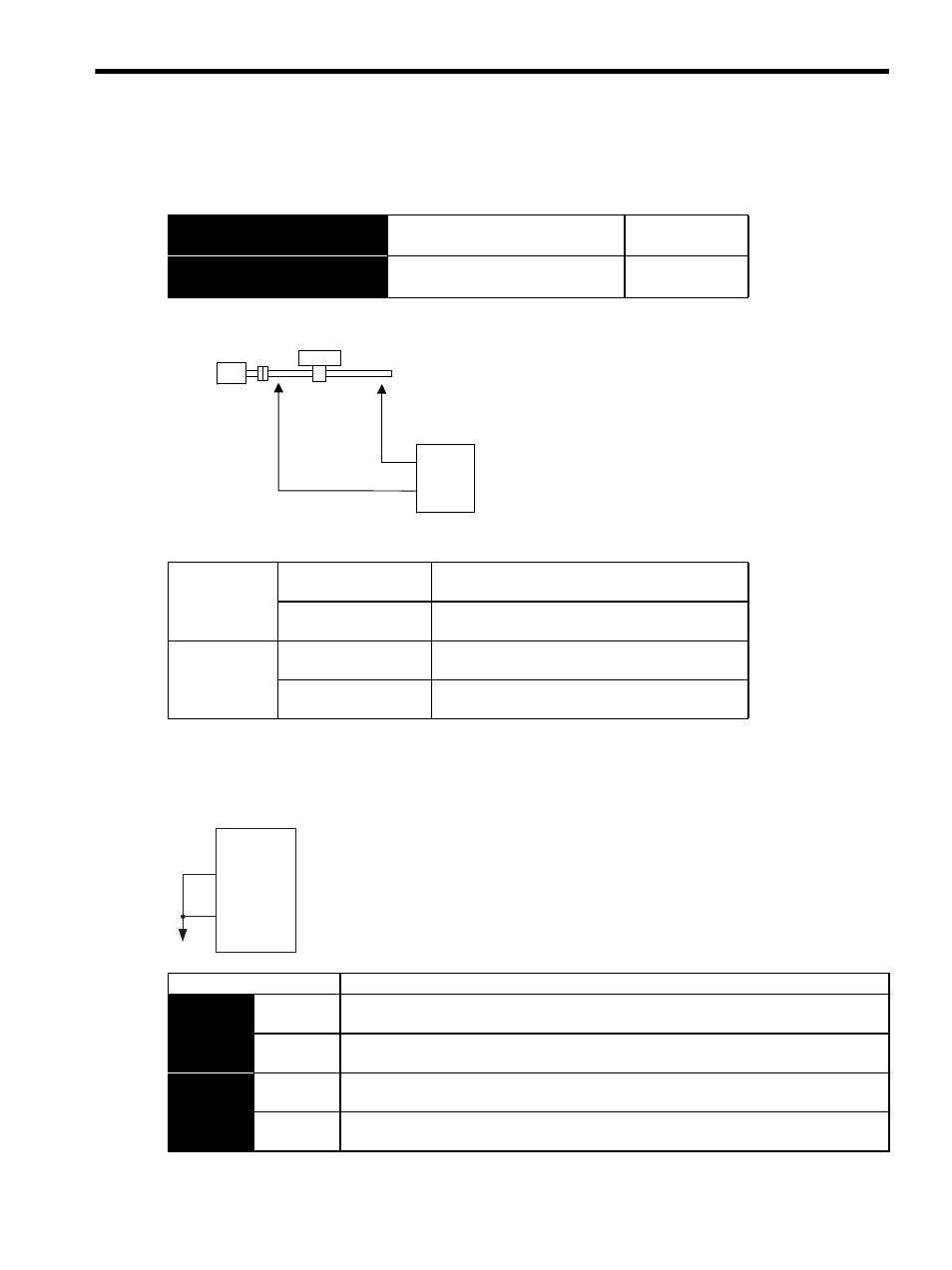2) using the overtravel function, 3) enabling/disabling input signals, 9 (2) using the overtravel function – Yaskawa SGDS Sigma III Servo Amplifier User Manual
Page 198

7.3 Settings According to Machine Characteristics
7-9
(2) Using the Overtravel Function
To use the overtravel function, connect the overtravel limit switch input signal terminals shown below to the
correct pins of the SERVOPACK CN1 connector.
Connect limit switches as shown below to prevent damage to the machines during linear motion.
Drive status with an input signal ON or OFF is shown in the following table.
(3) Enabling/Disabling Input Signals
Set the following parameters to specify whether input signals are used for overtravel or not. The factory setting is
“used.”
→ Input P-OT CN1-7
Forward Run Prohibited
(Forward Overtravel)
Position Control
→ Input N-OT CN1-8
Reverse Run Prohibited
(Reverse Overtravel)
Position Control
P-OT
CN1-7 at low level
when ON
Forward rotation allowed. Normal operation status.
CN1-7 at high level
when OFF
Forward run prohibited (reverse rotation allowed).
N-OT
CN1-8 at low level
when ON
Reverse rotation allowed. Normal operation status.
CN1-8 at high level
when OFF
Reverse run prohibited (forward rotation allowed).
Forward rotation end
Reverse rotation end
Limit
switch
Servomotor
SERVOPACK
CN1-7
CN1-8
N-OT
P-OT
Limit
switch
CN1-7
(P-OT)
CN1-8
(N-OT)
0 V
The short-circuit wiring shown in the figure can be
omitted when P-OT and N-OT are not used.
SERVOPACK
Parameter
Description
Pn50A
n.
1
Uses the P-OT input signal for prohibiting forward rotation. (Forward rotation is prohibited
when CN1-7 is open and is allowed when CN1-7 is at 0 V.) (Factory setting)
n.
8
Does not use the P-OT input signal for prohibiting forward rotation. (Forward rotation is
always allowed and has the same effect as shorting CN1-7 to 0 V.)
Pn50B
n.
2
Uses the N-OT input signal for prohibiting reverse rotation. (Reverse rotation is prohibited
when CN1-8 is open and is allowed when CN1-8 is at 0 V.) (Factory setting)
n.
8
Does not use the N-OT input signal for prohibiting reverse rotation. (Reverse rotation is
always allowed and has the same effect as shorting CN1-8 to 0 V.)
